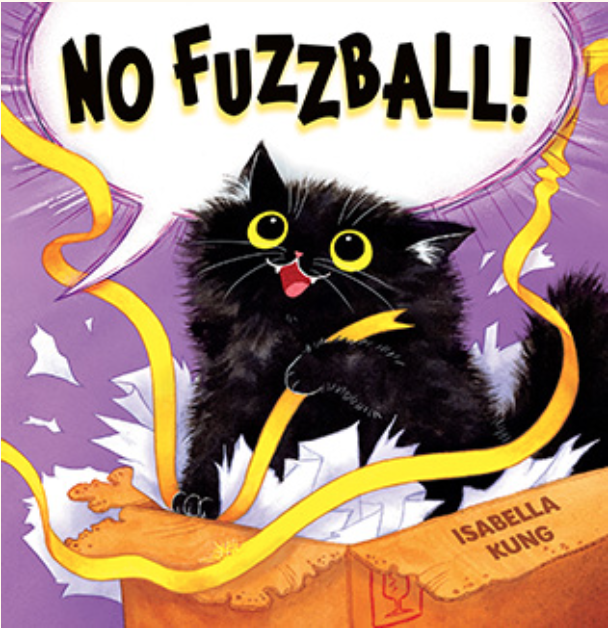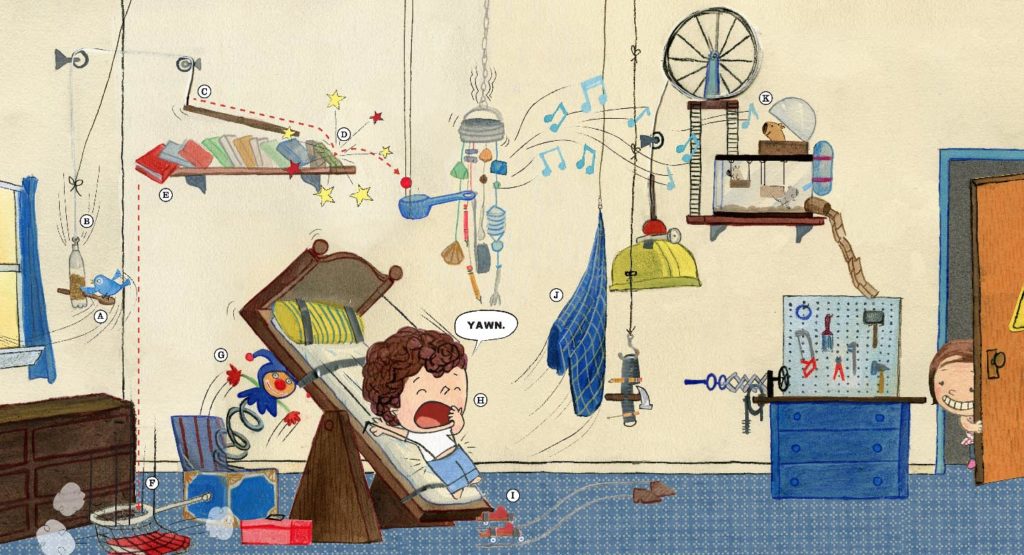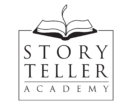Write Better Stories with Master Studies of Mentor Texts
- by Myrna Foster
- published
Picture book giveaway included at the end of this post.
Do you need a little help figuring out your picture book stories?
Arree Chung uses an exercise in his Crafting Picture Book Stories class that can probably help. I'm going to cover how doing Master Studies of great picture books can help you improve your own. You can use this exercise to study the basic elements of picture books you admire, like I'm going to demonstrate in this video. Books you study to improve your own are often referred to as “MENTOR TEXTS.” I'll go through some examples of how to use the Master Study exercise with mentor texts, and then we'll explore the different ways you can use Master Studies to improve your work.
Master Studies Exercise
Take a notebook and pen to a bookstore or library. Bookstores are better because you can see all of the most recent books, and which ones are getting the most attention.
Pick out ten picture books to read. Don't try to analyze them on your first read through.
Narrow your selection down to your five favorite books and write down the following for each of them:
- Character:
- Problem:
- Inciting Incident/Escalation: (How does the story increase tension?)
- Resolution:
- Book Concept: (What makes this book special?)
Master Study #1

NO FUZZBALL!
by Isabella Kung
- Character: a cat who thinks she’s a queen named “NO FUZZBALL!”
- Problem: The cat thinks her subjects (her family) have abandoned and forgotten her.
- Inciting Incident: The family goes on vacation.
Escalation: The cat imagines things that could have happened to them. She decides to turn over a new leaf and make their lives better with “royal renovations” that basically destroy everything in the house.
- Resolution: The family returns home, and upon seeing what the cat has done, begins yelling her name. The cat feels loved and appreciated.
- Book Concept: Definitely the character. I’m using this one as a mentor text because of the character’s strong, first person POV voice. But the illustrations are also striking. A child would pick this up because of the cover.
Master Study #2

A BIG MOONCAKE FOR LITTLE STAR
by Grace Lin
- Character: a mother and daughter who are stars. The main character is Little Star.
- Problem: Little Star can’t resist eating the big mooncake.
- Inciting Incident: The first sentence is the inciting incident: “Little Star’s mama laid the Big Mooncake onto the night sky to cool.”
Escalation: Her mama asks her not to touch the Big Mooncake until she tells her to, and Little Star agrees. But then every night, Little Star wakes up and nibbles at the mooncake until one night there isn’t anything left but crumbs. Her mama asks Little Star if she ate it, and she confesses.
- Resolution: They make another one!
- Book Concept: This book turns the stars into a loving mother and daughter and creates a fun new mythology about the stars and the moon. And unlike the usual white background pages, this picture book has striking illustrations on black, which is perfect for the subject matter.
Master Study #3

I TALK LIKE A RIVER
Written by Jordan Scott, Illustrated by Sydney Smith
- Character: a father and son. The main character is the boy.
- Problem: His stutter makes him not want to speak.
- Inciting Incident: His teacher asks him a question.
Escalation: His teacher wants him to talk about his favorite place in front of the class, but his mouth isn’t working. His dad picks him up from school and takes him to the river. His father explains how he talks like a river.
- Resolution: The next day, the boy tells his class about his favorite place, the river.
- Book Concept: This book is so lyrical, and it can help readers understand what it’s like to have a stutter. The author grew up with a stutter, so it’s #ownvoices. There isn’t anything else out there quite like it. Sydney Smith’s illustrations pair perfectly with the lyrical voice of the story.
Why Mentor Texts?
I love this video of Chronicle Books Editor Melissa Manlove talking about the importance of reading and studying lots of mentor tests.
Some of you might not be able to use your bookstores and libraries right now, but you can also study books on your shelves or watch someone read books for you on Instagram or YouTube. A lot of publishers have relaxed their normal copyright restrictions temporarily due to the pandemic.
A fabulous resource for mentor texts, especially in March is ReFoReMo (Reading for Research Month).
Book Giveaway
This has been a rough time for Asian Americans, and our kidlit community wouldn’t be the same without the many talented and generous Asian American creatives, including the founder of Storyteller Academy, Arree Chung. To give back a little, I’m giving away Grace Lin’s A BIG Mooncake for Little Star and Isabella Kung’s No Fuzzball! Post a Master Study of any children’s book in the comments to enter. This giveaway will close on May 1st at midnight, PDT. You can share this post on social media for extra entries. Just post a link (or let me know) in a comment below.
Thanks for reading!

Myrna Foster
Myrna Foster writes and edits content for Storyteller Academy and the WriteRiders Newsletter for SCBWI Nevada. She has spent a lot of time teaching and coaching children, including five years as a preschool teacher. She's also worked as a journalist, and Highlights High Five has published six of her poems.

FREE DOWNLOADABLE RESOURCES
Find them HERE

Learn how to write your children's book from professional, award-winning authors and illustrators
in your own time, at your own pace.
JOIN OUR COMMUNITY
Your creative village is waiting for you HERE.
And it's free!
FEATURED

How to Write Children's Books in 7 Steps
EXPLORE
RECENT POSTS
Instructor Stories: Darcy Pattison
Instructor Stories: Baptiste Paul
Instructor Stories: Isabella Kung
Challenges & Twitter Events for Kidlit Creators
Use Mentor Texts to Write Chapter Books



14 thoughts on “Write Better Stories with Master Studies of Mentor Texts”
Thanks for the great suggestions. I will be reading books that I have found on Amazon for this, too.
This is a wonderful post, Myrna. Finding mentor texts is always tough for me.
For my story, Rock, which is about a huge boulder stuck on top of a mountain longing for community, I looked at, Old Rock by Deb Pilutti.
Old Rock is perceived to be boring. But as the goading characters, find out, Rock has lived anything but a boring life
Character: A large stationary Rock.
Problem: Rock is stuck in place and appears to live a very boring life.
Inciting incident: Being challanged by the many adventures of the other characters, Rock finally begins to share about the exciting life they have lived.
Resolution: Other characters realize that Rock is anything but boring and has lived an exciting life over the span of centuries.
Concept: Educational, historical and geological, info shared through fun characters.
Great blog post and I love the books you chose to use in your examples. I have been working on this already but this blog post gives me a boost to do it over the break.
Lib Et your rock idea is wonderful. I have spent a lot of time around rocks and boulders. We had a lot in our yard as a kid and my Uncle is a Geologist so one of my favorite subjects!
Title- Chee-Kee: A Panda in Bearland
Character- Chee-Kee, a young panda whose family has relocated from the Island of Coney
Problem- Chee-Kee feels out of place in Bearland
Inciting Incident- the bears in Bearland see that pandas speak, look, eat and do other things differently
Resolution- Chee-Kee helps the bears of Bearland solve a problem in his panda way and all the bears realize different is great, special and valuable to everyone.
Book Concept- to understand diversity and embrace differences, valuing all good things rightly in ourselves and others
Thanks for this post Myrna and for the featured stories! I Talk Like a River is new to me and I'm definitely going to read it with my kids and teachers hubs.
Great post Myrna! These books are outstanding. Every time I read talk like a river, I can't help crying. And I agree with you about Grace's use of a dark background to tell the story of stars through a human relationship. And the VOICE on No Fuzzball, is just great. Thank you for these shares.
Thanks for sharing your studies. I love the simplicity of how you broke down these powerful mentor texts, particularly the description of escalations.
https://twitter.com/BiemansLenora/status/1373719014808109059
This is an excellent video to show how to use the mentor texts. Thanks so much. I have joined the ReFoReMo and am thoroughly enjoying it and definitely finding mentor texts. The book I chose for this exercise is Tip- Tap Pop by Sarah Lynn, illustrated by Valeria Docampo.
The characters are a little girl Emma and her grandpa wh are tap dancing partners.
The problem is that Pop stopped dancing
The inciting incident and escalation is that Pop started forgetting things and then stopped dancing or talking, just sat in his chair
Resolution; Emma put on a tap dancing show like the ones that she and Pop used to do together and his feet joined in with the tapping so she got his shoes and they danced again at least for that day.
Book Concept- This shows how to cope with an older person who has memory issues and how to keep those shared memories alive. I chose this book as a mentor text because I am writing a book about a grandpa as well and because I really liked the way it dealt with a common social issue that many families deal with. This would help children to understand.
Thanks for the video on mentor texts. We share them in our critique group and it's always great to read a book for pleasure and help improving our craft.
The book I chose is Tease Monster. I'm writing a book about a bully and I wanted to see how someone talked about this topic using humour.
The characters are colourful monsters and the main character is a monster with big feet.
The problem is the monster's classmates tease him and make his day at school so awful he doesn't want to go back
The inciting incident is when Purple teases him for having big feet and the way he eats. The escalation is when the other monsters tease him for falling down and doing well on the math test.
Resolution happens when the monster talks to his mom and she explains how words behave differently–mean teasing and friendly teasing or laughing at someone and laughing with someone. He puts his lesson into practice at school the next day.
Book Concept this book shows how to cope with teasing at school and how to watch what you say so you don't hurt someone.
Thanks Myrna! Since I am in the messy middle of a story with a non-human character struggling with his identity, and the concept of found families, I chose GASTON by Kelly DiPucchio as my mentor text.
1. Main Character: Gaston, a bulldog puppy
2. Problem: Due to a mixup at the animal hospital, he winds up in a family of fancy French poodles. .
3. Inciting Incident: The puppy mixup is actually told visually, in the pictures on the copyright and title pages.
4. Escalation of Tension: Gaston tries to fit in, and be fancy like Mama Poodle likes, but then they go on their first trip to the park – and meet a rough-and-tumble bulldog family with one little poodle pup.
5. Resolution: The puppies switch places, so that the poodles are all together and the bulldogs are all together. It looks right, but it doesn't *feel* right – aww great emotion! So the puppies switch back; nurture has a stronger pull than nature in this story. Then the 2 swapped-at-birth puppies grow up, fall in love, and have puppies of their own.
6. It Factor – Finding yourself and fitting in are always great themes. Plus – puppies! And this book has a lovely French flavor to it, making it even more charming.
Title- Chee-Kee: A Panda in Bearland
Character- Chee-Kee, a young panda whose family has relocated from the Island of Coney
Problem- Chee-Kee feels out of place in Bearland
Inciting Incident- the bears in Bearland see that pandas speak, look, eat and do other things differently
Resolution- Chee-Kee helps the bears of Bearland solve a problem in his panda way and all the bears realize different is great, special and valuable to everyone.
Book Concept- to understand diversity and embrace differences, valuing all good things rightly in ourselves and others
Thanks for this post Myrna and for the featured stories! I Talk Like a River is new to me and I'm definitely going to read it with my kids and teachers hubs.
Thank you Myrna, great post.
The Girl Who Never Made Mistakes by Mark Pett and Gary Rubinstein, illustrated by Mark Pett.
Characters: Beatrice Bottomwell, her parents, her younger brother Carl who loves to make mistakes, her hamster Humbert, her best friends Millie and Sara, her fans. Main Character is Beatrice. Most people in town did not even know her name, they just called her ” The Girl Who Never Makes Mistakes.”
Problem: On Friday night, Beatrice is participating as a juggler in the talent show. Everybody in town is there . She has won first price three years in a row. Somehow this year she is worried that she will mess up. Her father reassures her ” you never mess up.” She picks up Humbert, the salt shaker and fills up a balloon with water.
Inciting Incident: Beatrice is on stage, the music is playing, the crowd is clapping with delight. As she juggles her three elements she notices something odd about the salt shaker. The specks falling out of it are not white.
Escalation: Humbert sneezes and is so surprised by his giant sneeze that he grabs the water balloon with his claws. Humbert, pepper, water, and pieces of the balloon fall down on Beatrice's head.
For the first time Beatrice makes a mistake and it is a big one. She does not know if she should leave the stage or just cry. The music stops and the crowd is stunned.
Resolution: Beatrice looks up at Humbert, he looks back at her, his fur is soaked and covered by bits of balloon. She lets out a giggle which grows into a chuckle which becomes a laugh. The audience looks at each other and reacts in the same way. Everybody laughs so hard until they don't remember why they are laughing.
Book Concept: A perfectionist girl makes a mistake for the first time and she realizes that it is OK. She starts enjoying not being perfect. The people start calling her simply Beatrice and her fans don't knock at her door anymore.
I liked this book because people who are perfectionists are admired by others until they make a mistake and the whole process stops. Perfectionists are constantly putting pressure on themselves. Very interesting how the illustrator used black and white on the fans and audience and colors on the rest.
In a Jar
Written and illustrated by Deborah Marcero
1. Character: Two rabbit children, 1 teaches the other to collect experiences in jars. They are friends.
2. Problem: Evelyn has to move
3. Inciting Incident: Llewellyn misses his friend very much
4. Escalation: Llewellyn has an idea to capture an experience in a jar and mail it to Evelyn
5. Resolution: Evelyn returns the favor and in the back and forth of shared experiences Llewellyn finds a new friend
Book Concept: This book is touches on the feelings of loss on a child's level and offers a solution for continued friendships and relationships.
I chose GUS AND GRANDPA AND THE TWO WHEELED BIKE by Claudia Mills.
Characters- Gus, Grandpa and mom and dad
Problem- Gus uses training wheels to bike compared to same boy his age who uses the real bike. He always finds himself falling using the new bike (with two wheels) that his mom and dad buy for him.
Inciting incident- He turns to Grandpa for help telling him his sentiments.
Escalate- Grandpa fixes the old, old bike stored in the broken shed that Gus's father used when he was a young boy his age. They practice a million times until Gus eventually flies like a winged horse galloping in the sky.
Concept- the love and affection between a father and son resurrected in the third generation through the passing of times.